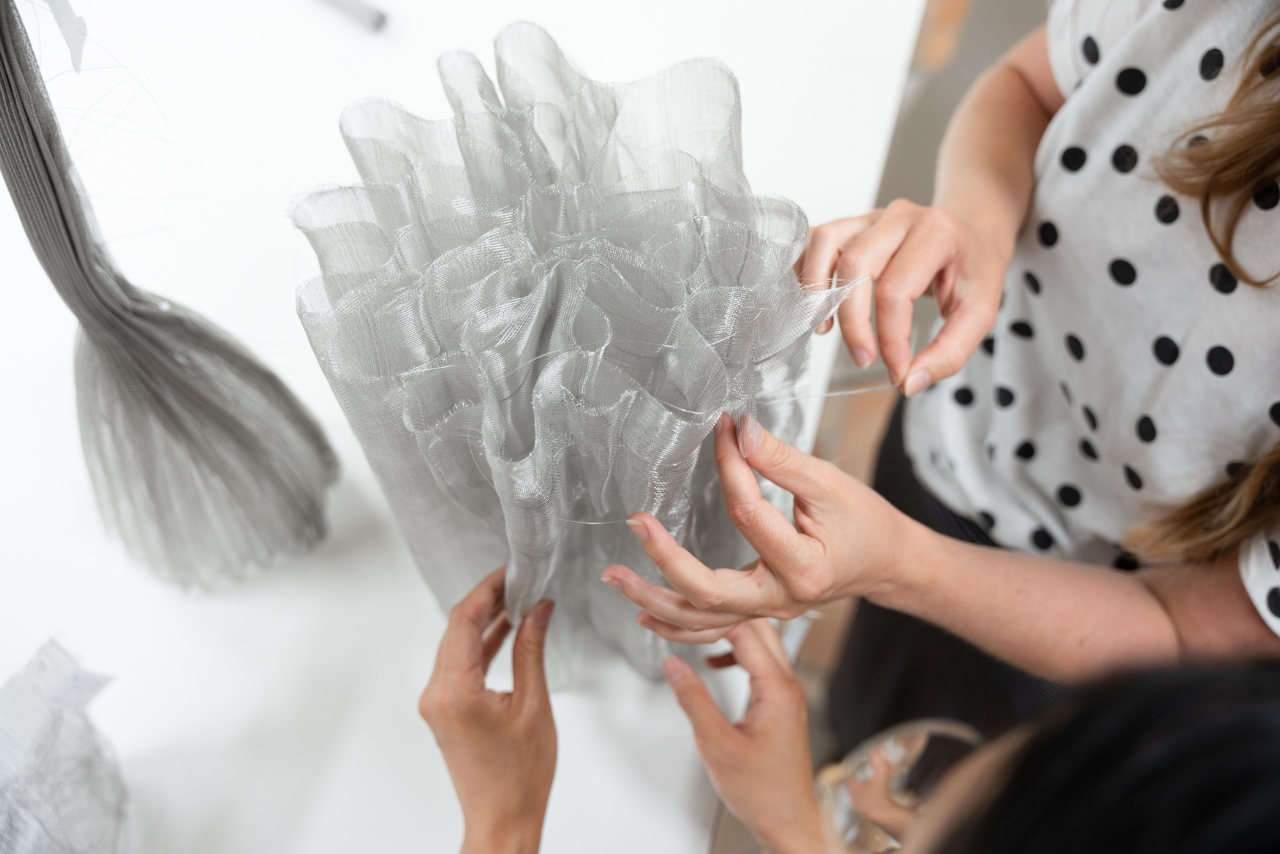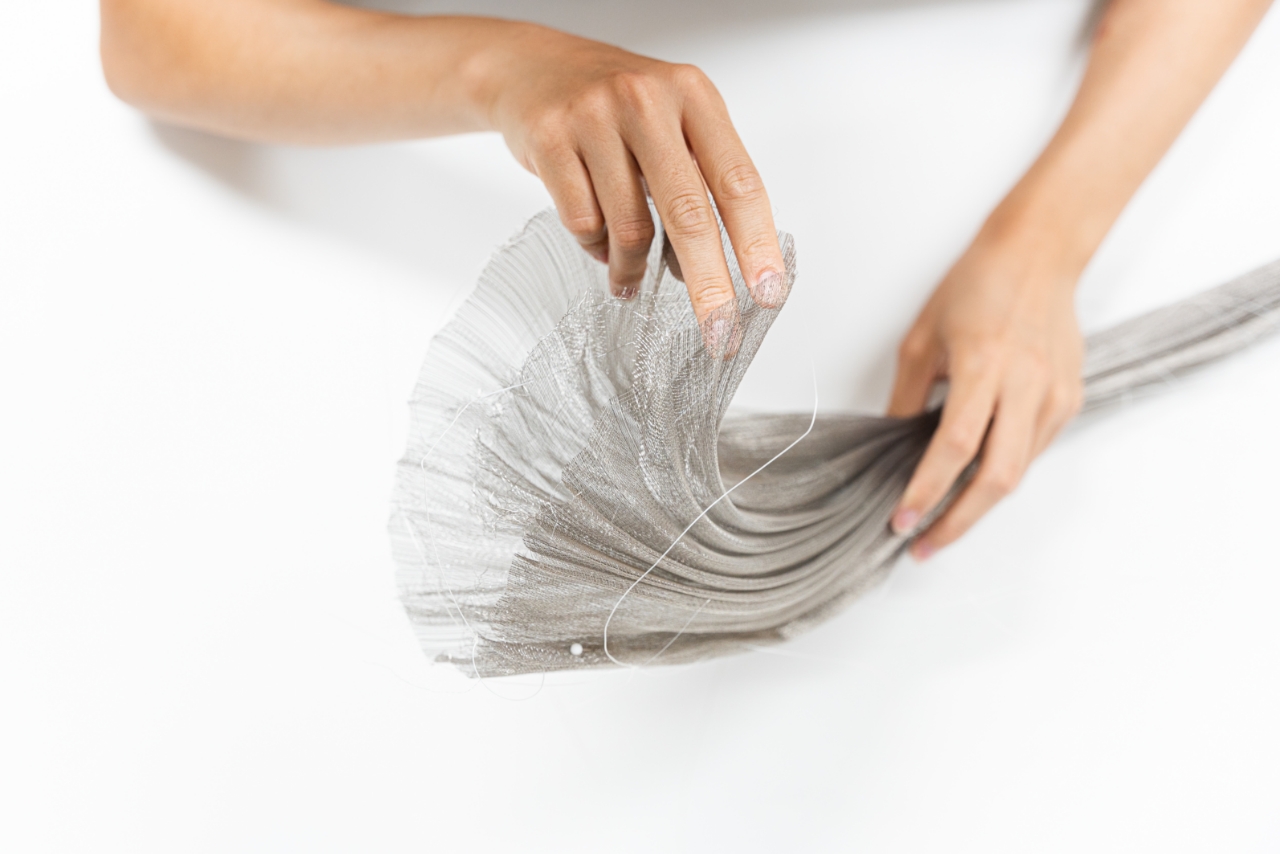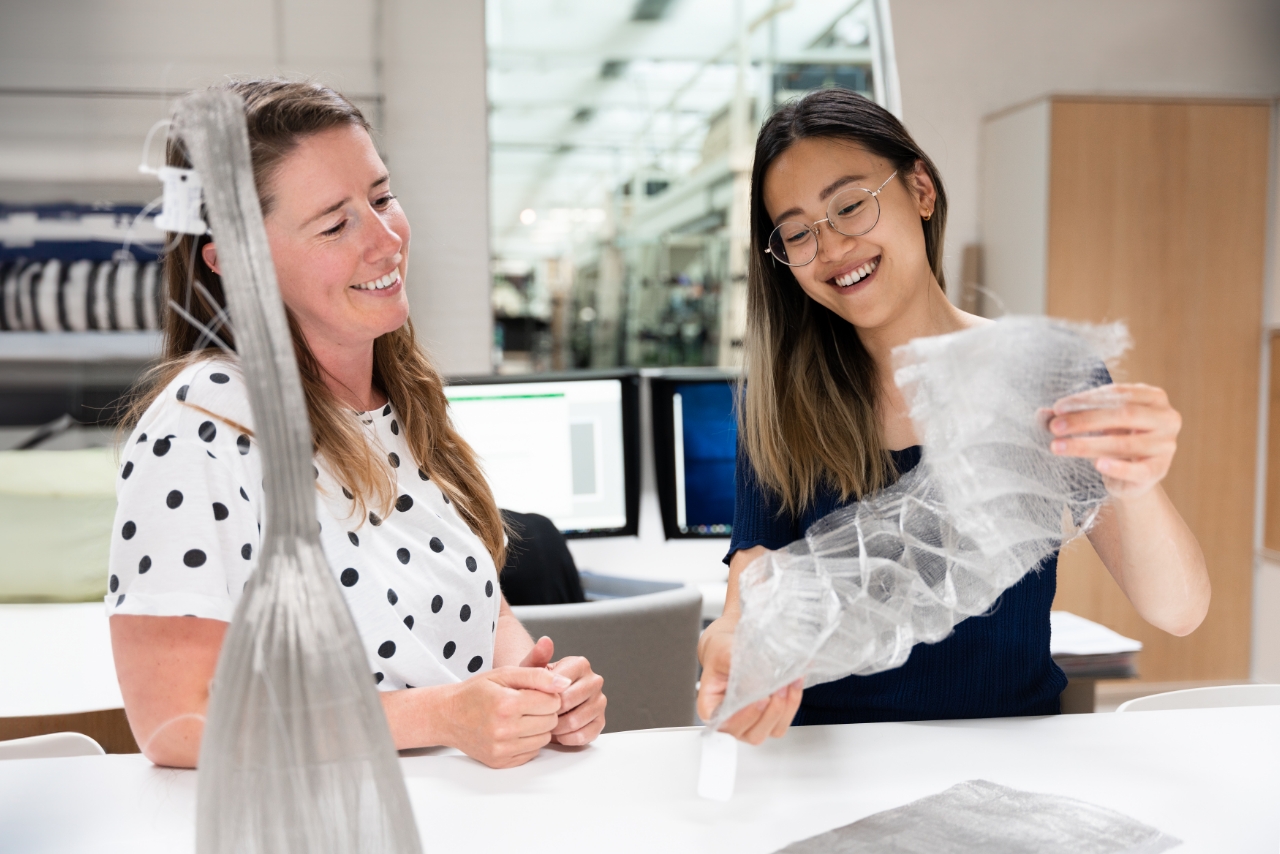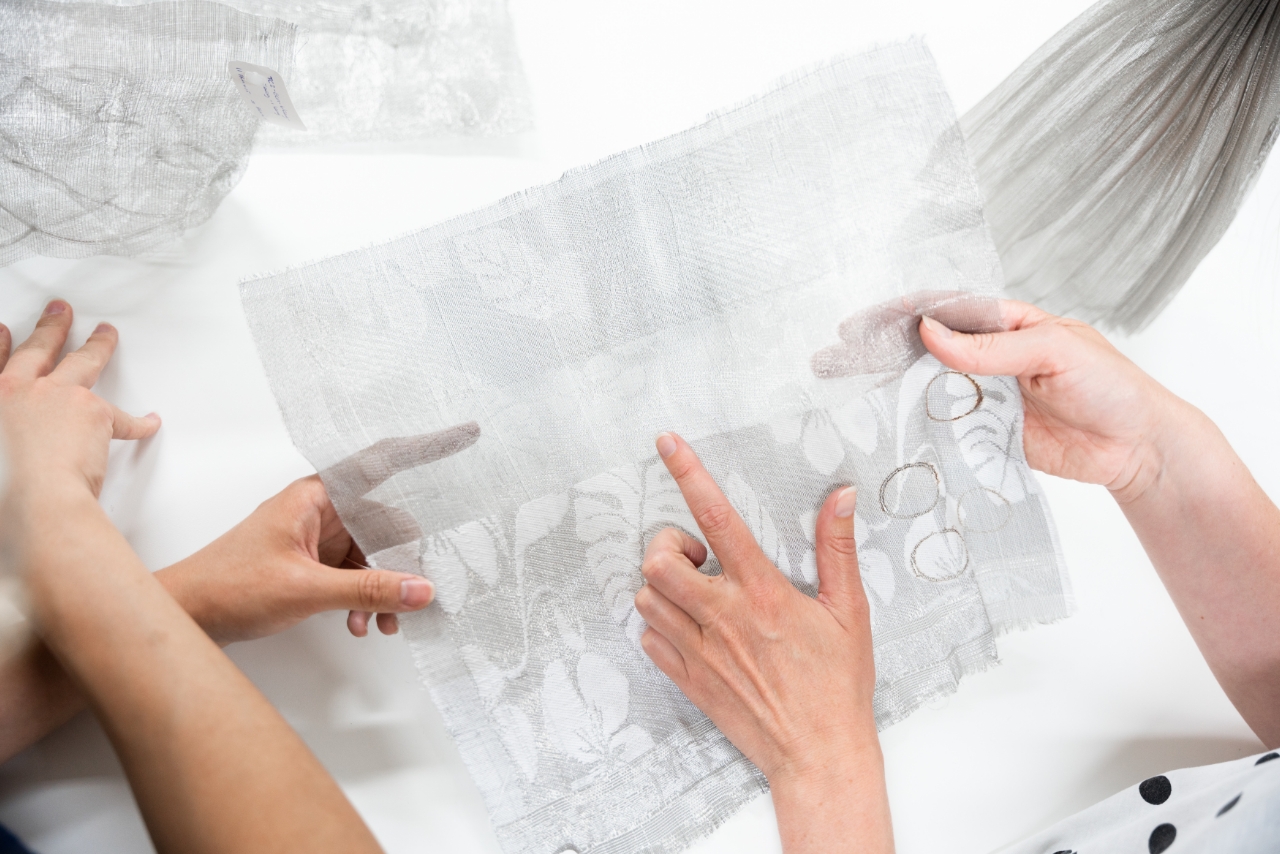For the R&D programme ‘building with textiles’, product developer Judith Peskens is experimenting extensively with metal weaving. She uses both a metal weft and a metal warp, creating self-supporting, malleable structures.
After numerous tests on the small TC2 loom with stainless steel and aluminium warps, she will scale up to a larger machine after the summer. In terms of material, aluminium has come out on top: it is light, strong and slightly more sustainable than stainless steel. Meanwhile, the carefully documented collection of structural samples is growing steadily. Peskens and her colleague Yani Chuang, a textile designer and knitting specialist, selected four samples for the maker’s newsletter. These are not only a sign of things to come for new woven indoor and outdoor applications but are also a feast for the eyes.

Judith Peskens and Yani Chiuang with the layered sample. Photo: Patty van den Elshout
Ruffles and layers
This lavishly ruffled sample was made with a polyester monofilament warp and an aluminium weft. By weaving multiple layers, connecting them at certain points and pulling them into folds using an inbuilt drawstring, a structure like a millstone collar is created. Turn it on its side and the ruffled object will stand on its own. Dividing the warp into three, six or even 12 layers produces a delicate yet strong fabric. The use of an aluminium warp would make this even stronger. Imagine scaling this up to the size of a pillar and standing several of them next to each other: you would have impressively sized woven building blocks.

Sample inspired by the design of DRIFT “I am Storm”. Photo: Patty van den Elshout
Pleated stem with base
This sample was inspired by DRIFT’s design for ‘I am Storm’. The studio made its swaying plumes – which will be on display from October in the exhibition Is it alive? – from polyester monofilament. But Peskens also wove replicas from stainless steel and aluminium. This drastically alters the colour and appearance of the objects and makes them easier to manipulate. It’s worth mentioning that aluminium has a memory: it can bend and snap only once. Filling the wide ‘bell’ at the bottom with other woven structures results in a sturdy, self-supporting base.

Judith Peskens and Yani Chiuang with the honeycomb structure sample. Photo: Patty van den Elshout.
Honeycomb
During a brainstorming session with DRIFT, the idea of a honeycomb structure was born. Half of this sample reduces from six layers to three layers and finally to one layer. It also plays with denser and looser weaves. By beating the threads in one part a little harder, a kind of ribbon undulating through the open structure emerges. This sample was an instant favourite with Chuang. “The pattern, shape and density feel just right. It’s airy, organic and really holds your attention. I can imagine a kind of room divider, a playful wall with that lovely honeycomb effect across the bottom.”

Yani Chiuang and Judith Peskes with the metal damask sample. Foto: Patty van den Elshout
Metal damask
Between all the structural samples is something completely different: damask made largely of aluminium. Satin weaves were used to create a subtle pattern of leaves and flowers that is revealed as the angle of the light changes. Sometimes the warp is visible, sometimes the weft. Peskens also investigated how the material reacts to a laser. Cotton, merino wool and polyester monofilament burn away, leaving the aluminium behind. This combination could produce stunning screens or window films, featuring visual stories and subtle openings.
Want to know more about this research? Keep an eye on the TextielLab’s website and newsletter, where we will post any developments related to weaving with metal. DRIFT’s ‘I am Storm’ can be seen in the exhibition Is it alive? from 14 October 2023 to 7 April 2024.